Lots of interesting abstracts and cases were submitted for TCTAP 2025. Below are the accepted ones after a thorough review by our official reviewers. Don’t miss the opportunity to expand your knowledge and interact with authors as well as virtual participants by sharing your opinion in the comment section!
TCTAP C-245
When Life Gives You a Second Chance
By Kumutha Gobal, Koh Hui Beng, Quah Jeremy, Azmee Ghazi, Gurudevan Mahadevan
Presenter
Kumutha Gobal
Authors
Kumutha Gobal1, Koh Hui Beng2, Quah Jeremy2, Azmee Ghazi2, Gurudevan Mahadevan1
Affiliation
Sultanah Aminah Hospital, Malaysia1, Institut Jantung Negara, Malaysia2,
View Study Report
TCTAP C-245
Heart Failure - Mechanical Circulatory Support
When Life Gives You a Second Chance
Kumutha Gobal1, Koh Hui Beng2, Quah Jeremy2, Azmee Ghazi2, Gurudevan Mahadevan1
Sultanah Aminah Hospital, Malaysia1, Institut Jantung Negara, Malaysia2,
Clinical Information
Patient initials or Identifier Number
Relevant Clinical History and Physical Exam
18 years old female presented with failure symptoms since early 2023. She was diagnosed with chronic active lymphocytic myocarditis with severe TR and moderate MR confirmed by raised troponin, endomyocardial biopsy and cardiac MRI. Her examination revealed raised JVP, hypotension, and crepitations till midzone.
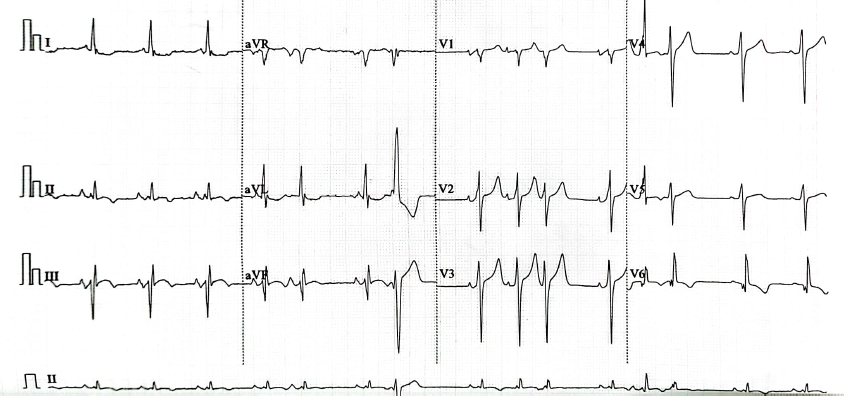
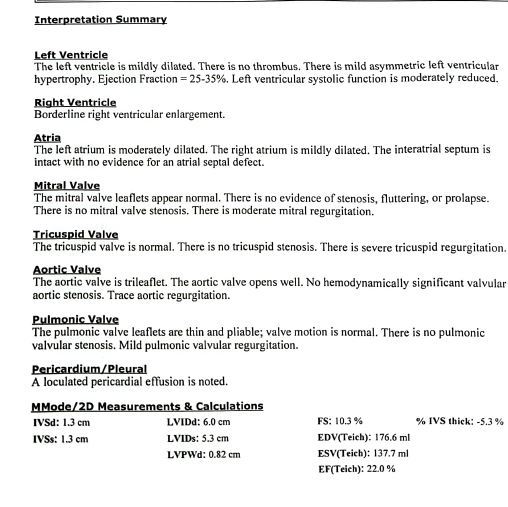
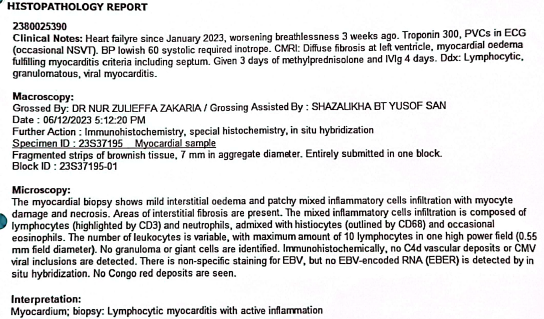



Relevant Test Results Prior to Catheterization
Patient had normal FBC, renal function and thyroid function test. However, her NT proBNP was 12838. The initial right heart catheterization (RHC) showed LV systolic dysfunction with adequate RV function, post capillary pulmonary hypertension. Repeated RHC was worsening with biventricular failure in cardiogenic shock.
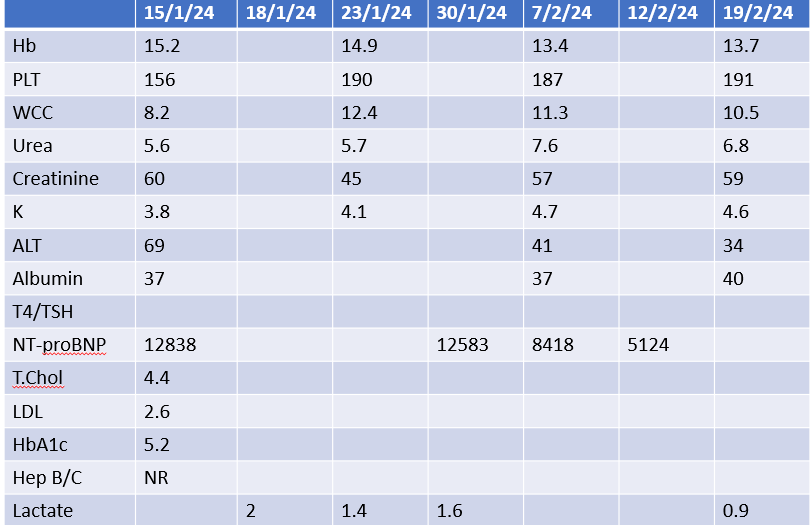

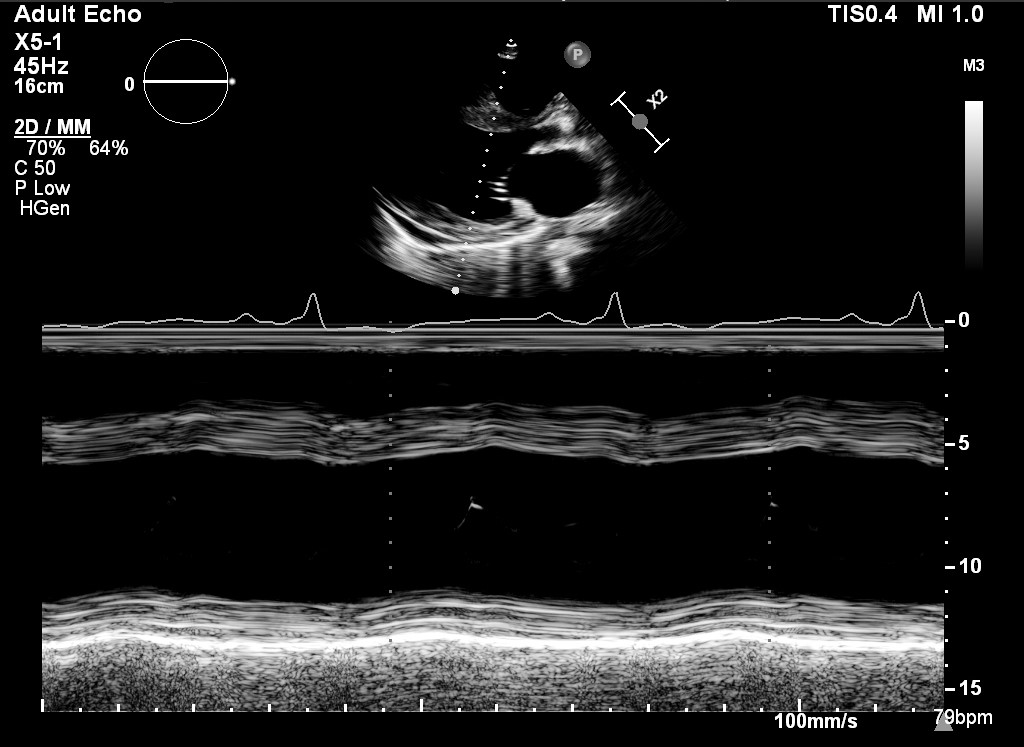



Relevant Catheterization Findings
RHC on 5/12/23 RHC on 17/1/24RA : 6 RA : 24Mean PA : 22 Mean PA : 38PCWP : 12 PCWP :30 TPG : 10 TPG :8CO : 2.36 CO :1.39CI : 1.69 CI :0.69
Coronary angiogram : Normal coronaries
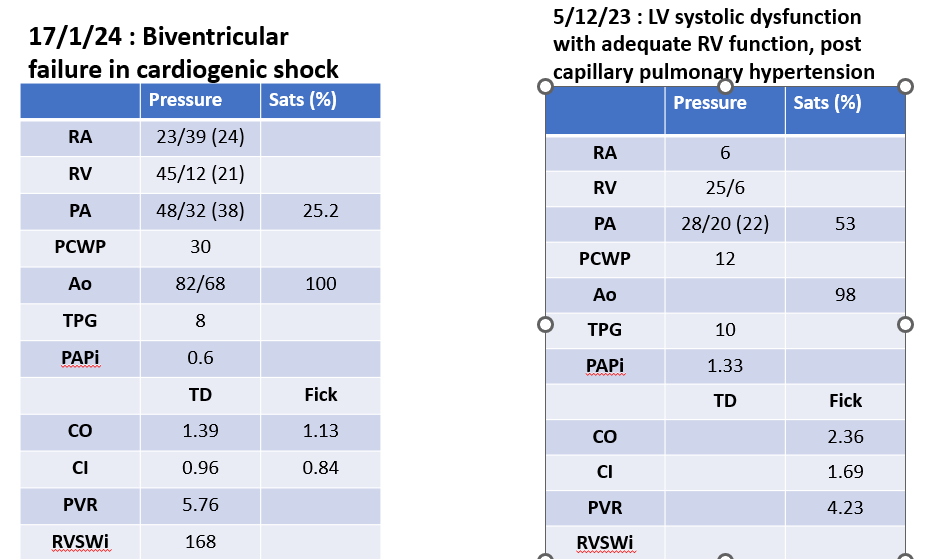
Coronary angiogram : Normal coronaries

Interventional Management
Procedural Step
Following the RHC, patient was started on triple inotropes and was discussed urgently in the transplant meeting and was decided for left ventricular assist device implantation with TV repair as a bridge to transplant. Intraoperatively, patient was unable to come off bypass, hence, a right ventricular assist device (RVAD) had to be implanted. Following that,intraoperative transesophageal echocardiogram showed improvement in right and left ventricular function. Patient had oozing from multiple sites requiring blood transfusion as well as toileting. Patient was activated under urgent heart transplant listing. Patient underwent urgent orthotopic heart transplant five days later. Intraoperatively, the procedure was uneventful and patient was weaned off inotropic supports gradually. Patient had the first endomyocardial biopsy on post operative day twelve and there was no signs of acute cellular rejection or antibody mediated rejection. Currently, patient is nine months post orthotopic heart transplant and is doing very well with regular follow up and compliant to the immunosuppression prescribed. Patient is on prednisolone, tacrolimus and mycophenolate mofetil. She is in NYHA class I.
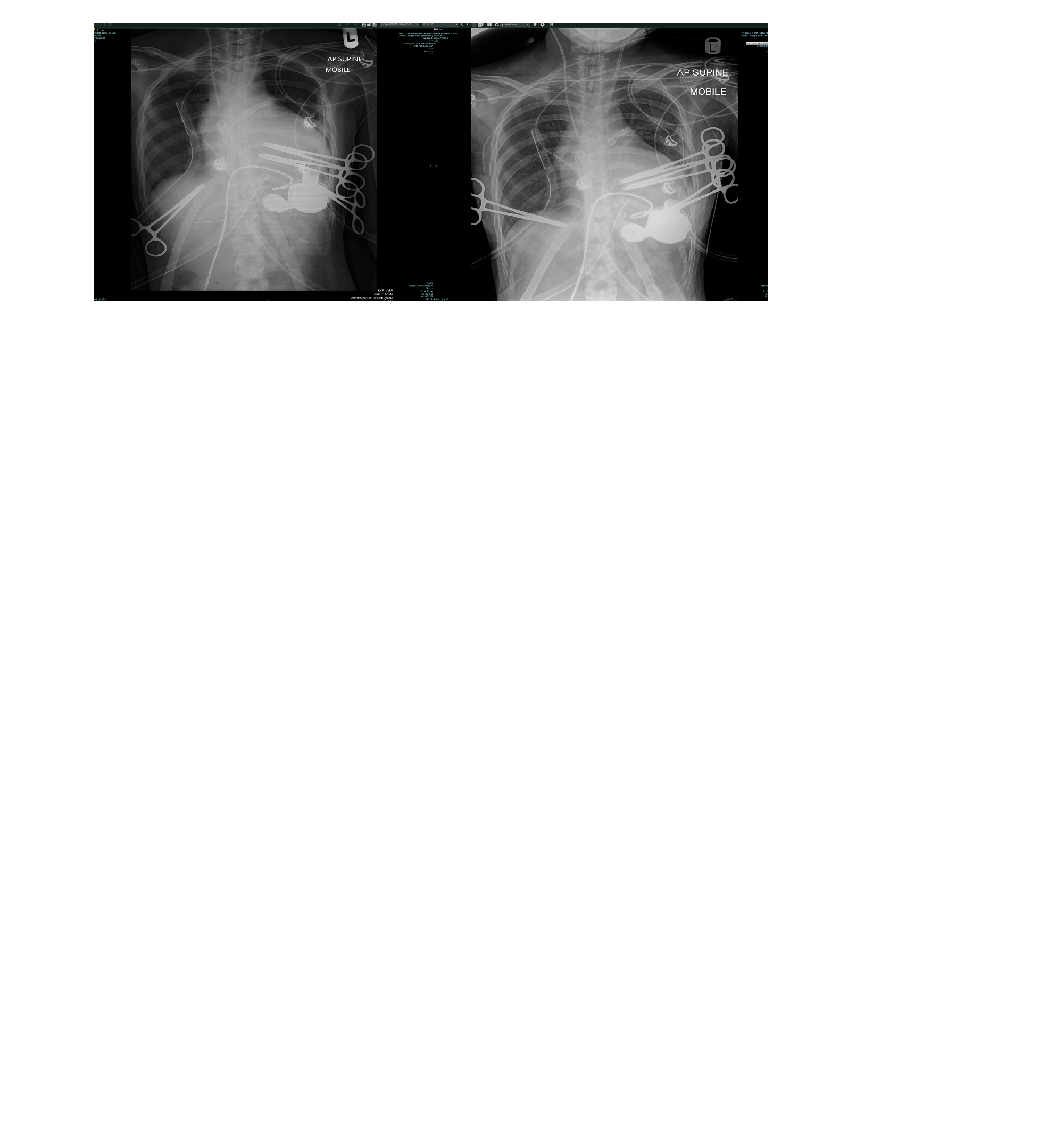
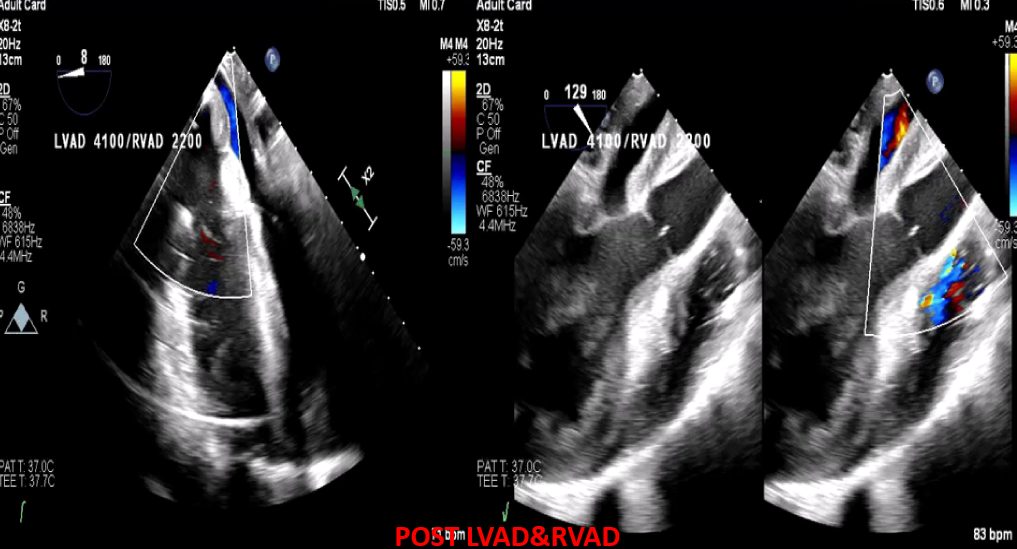
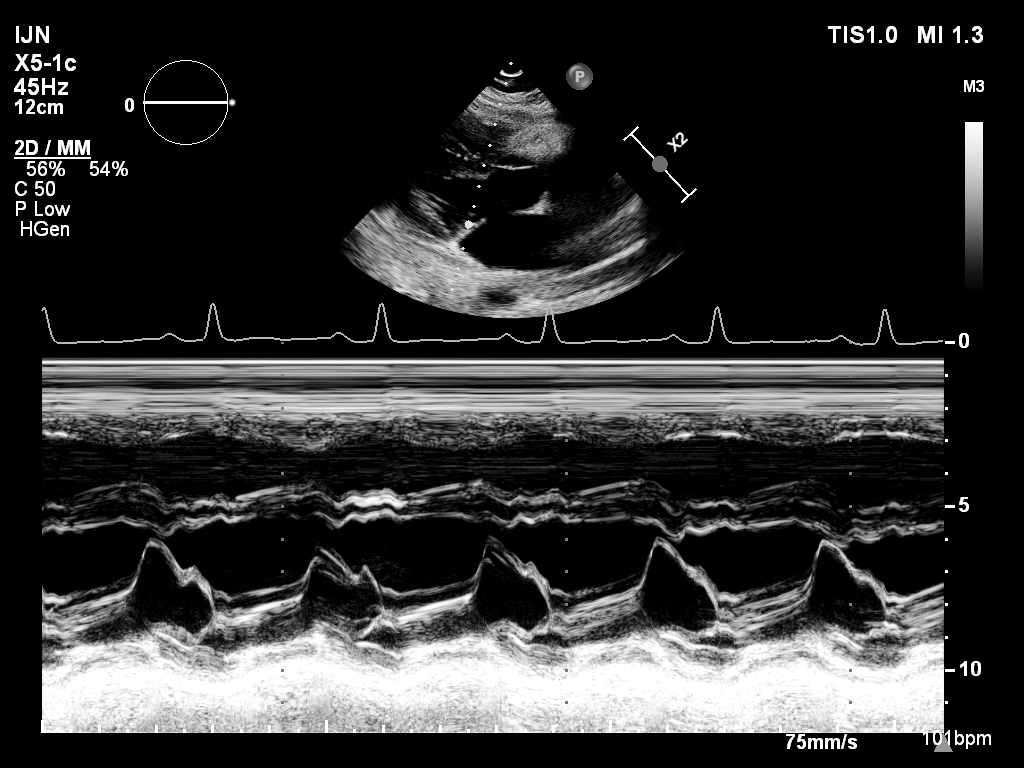



Case Summary
In conclusion, mechanical devices for heart failure, such as ventricular assist devices (VADs), represent a critical advancement in the management of advanced heart failure. These devices offer significant benefits by improving cardiac output, reducing symptoms, and prolonging survival. Orthotopic heart transplantation (OHT) remains the gold standard treatment for end-stage heart failure when other therapeutic options have failed like what happened in this patient. While the success rates for OHT have significantly improved over the years due to advancement in surgical technique, immunosuppressive medications, and post-operative care but the challenges still persist.


